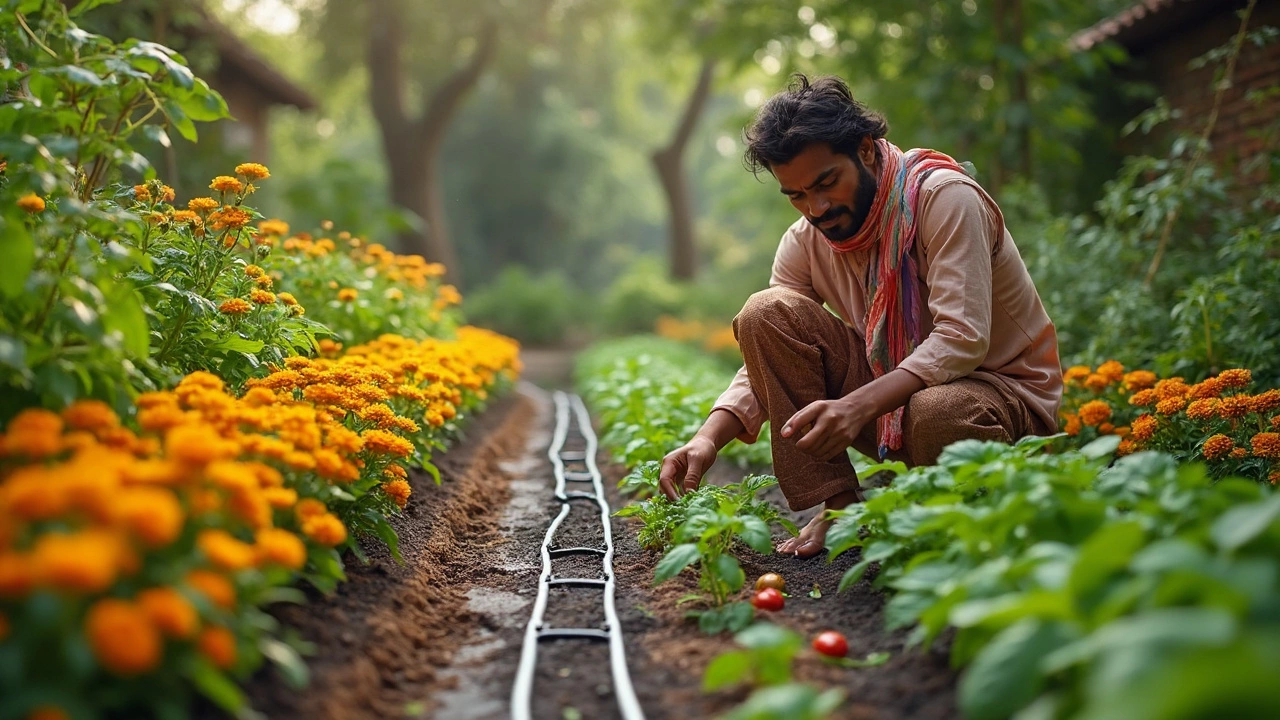Ever wondered if you should run your drip irrigation lines under landscape fabric? This article tackles the pros and cons, explains how setup choices impact your garden, and dishes out tips for simple, long-lasting maintenance. Skip the guesswork with real-world advice, plus doable ways to avoid clogging and water waste. Perfect for DIY gardeners looking for practical irrigation hacks.
Landscape Fabric: What It Is, How It Works, and Where It Really Helps
When you see a roll of landscape fabric, a permeable textile used to suppress weeds and stabilize soil in gardens and farms. Also known as weed barrier, it’s often laid over soil before adding mulch or stones to keep weeds from popping up. It sounds simple—lay it down, cover it, and forget it. But in Indian gardens, where monsoon rains, heavy clay soil, and intense sun are the norm, landscape fabric doesn’t always do what it promises.
It works best in areas where you want to reduce weeding without planting—like around trees, along pathways, or under decorative stones. But it fails when used under vegetable beds, in high-moisture zones, or where roots need to spread. Many gardeners in India use it thinking it’s a magic shield, only to find weeds growing right through it after a year, or worse—water pooling on top because the fabric clogs with silt. That’s why it’s not a one-size-fits-all fix. It’s a tool, not a solution.
Related to garden mulch, a layer of material spread over soil to retain moisture and block weeds, landscape fabric is often paired with wood chips or gravel. But unlike organic mulch that breaks down and feeds the soil, fabric just sits there. Over time, it can trap salts, prevent air flow, and even hurt plant roots if planted through too tightly. Then there’s soil protection, the practice of shielding topsoil from erosion and compaction. Landscape fabric does offer this in some cases—especially on slopes or in high-traffic areas—but it’s not the only way. Compost, leaf litter, or even living ground covers like creeping thyme can protect soil better and actually improve it.
And here’s the thing: if you’re using landscape fabric because you’re tired of pulling weeds, ask yourself why the weeds are there in the first place. Is your soil too compacted? Are you overwatering? Are you planting the wrong things in the wrong spots? The real fix often lies in fixing the soil, not covering it up. That’s why the posts here don’t just show you how to lay fabric—they show you when to avoid it entirely. You’ll find real stories from Indian gardeners who tried it, failed, and found better ways. Others used it right—on terraces with stone paths, around fruit trees, or in commercial nurseries—and share exactly how they did it.
You’ll also see how it connects to drip irrigation (clogged lines under fabric are a nightmare), soil amendments (fabric blocks organic matter from reaching roots), and even balcony gardening (where space is tight and every inch counts). This isn’t about selling you a product. It’s about helping you decide if it’s right for your patch of earth—whether it’s a tiny balcony, a backyard plot, or a small farm. The truth? Sometimes less is more. And sometimes, the best ground cover is the one you let grow.
